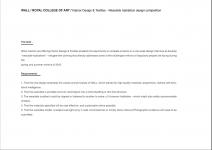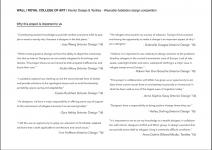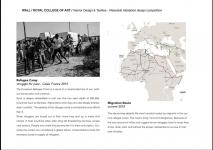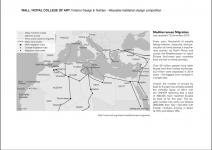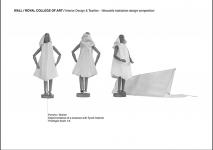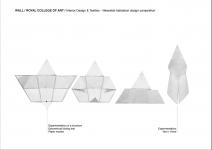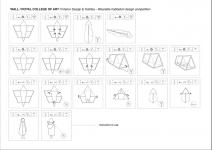ROYAL COLLEGE OF ART Interior Design & Textiles students have developed an innovative and multi-functional wearable dwelling in direct response to the Syrian refugee crisis. The garment is designed to adapt from a jacket with large storage pockets into a sleeping bag and also a tent.
The European refugee crisis has seen around 400,000 men, woman and children land upon the Mediterranean shores. Coupled with increased media coverage, people around the world have become more informed to the plight of those making the journey. The need of refugees to relocate is fueled by complicated aspects out of our control but as designers we recognize our ability to contribute to concerted global effort to ease this crisis.
In response, we have created a wearable shelter: a personal piece of clothing, that when unfolded creates a suitable dwelling to provide protection from the elements. Our concept is based on the principles of inflation and the versatility of a vest. We have opted to use a high quality material, Tyvek®, a unique and multifaceted material, tough, yet extremely light and soft. It is permeable to air and water vapor while still repelling rain.
We seek to impart a sense of security both physically and literally by providing full body coverage. Other unique aspects are the ability to document health concerns, travel companions and originating location. We feel these aspects serve as a means of reminding the user of its connection to their origins in a moment of complete disconnect.
As a wearable piece, our clothing is equipped with pockets for personal items, a hood and heat insulation. Heat insulation is gained through the use of a patterned of Mylar, more commonly known as Emergency or Space blankets, adhered to the inside of the piece. One’s own heat is trapped inside creating a self serving warmth system.
As a tent, our piece, is designed to house a full size adult as well as a small child. The shelter has two varying heights from one end to the other in an attempt to reduce the amount of fabric a user has to carry on their body. The pieces used as a means of access to the shelter can be contacted to one another to join people of larger groups together.
2015
2016
Please see image submissions.
Zara Ashby, Cassie Buckhart, Ruben Van Den Bossche, Hailey Darling, Gabriella Geagea, Anne Sophie Geay, Eve Hoffmann, Giulia Silvoy.

